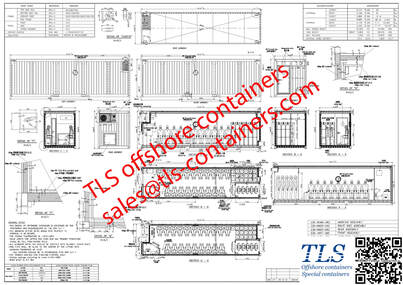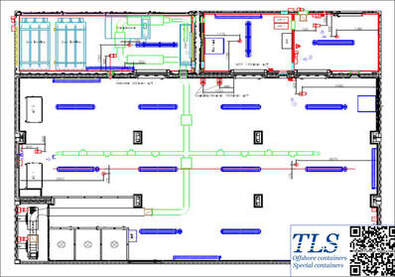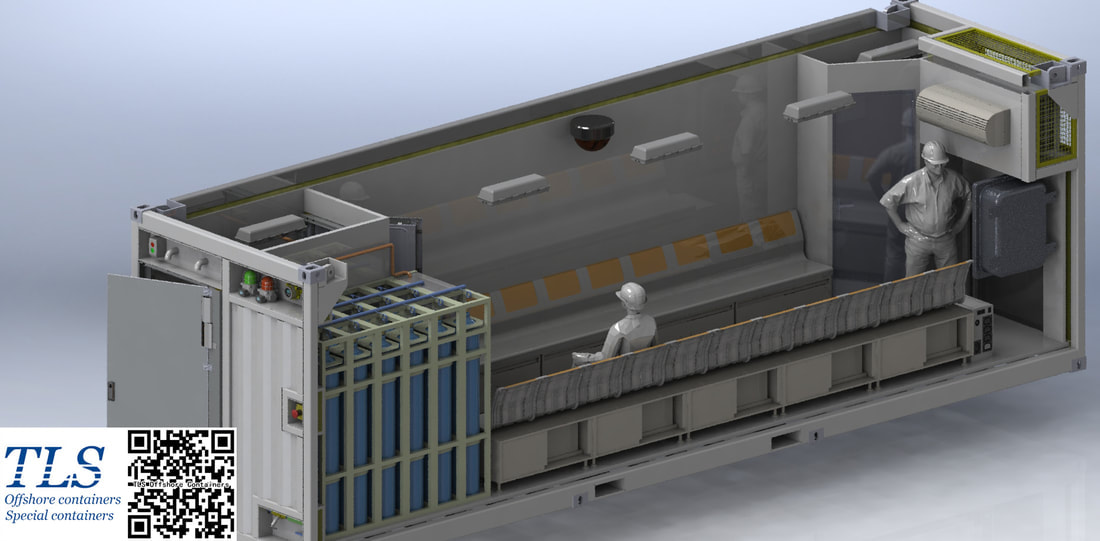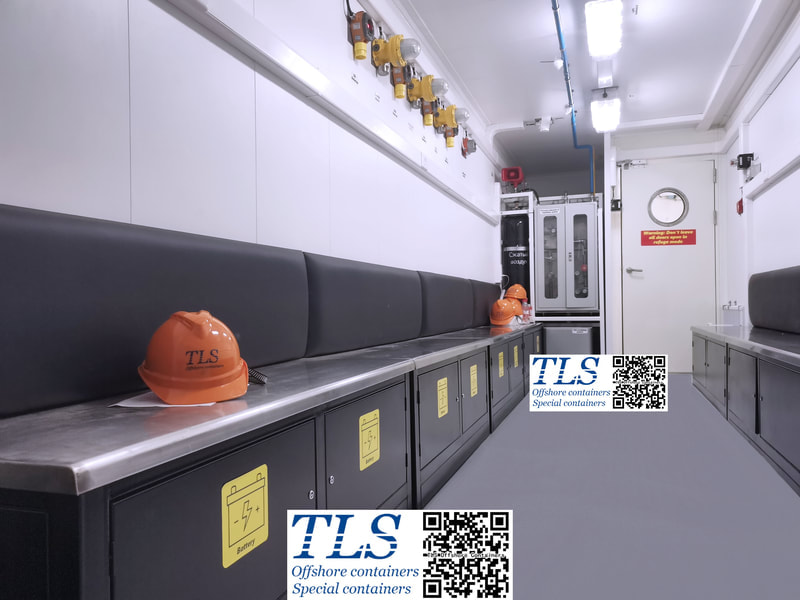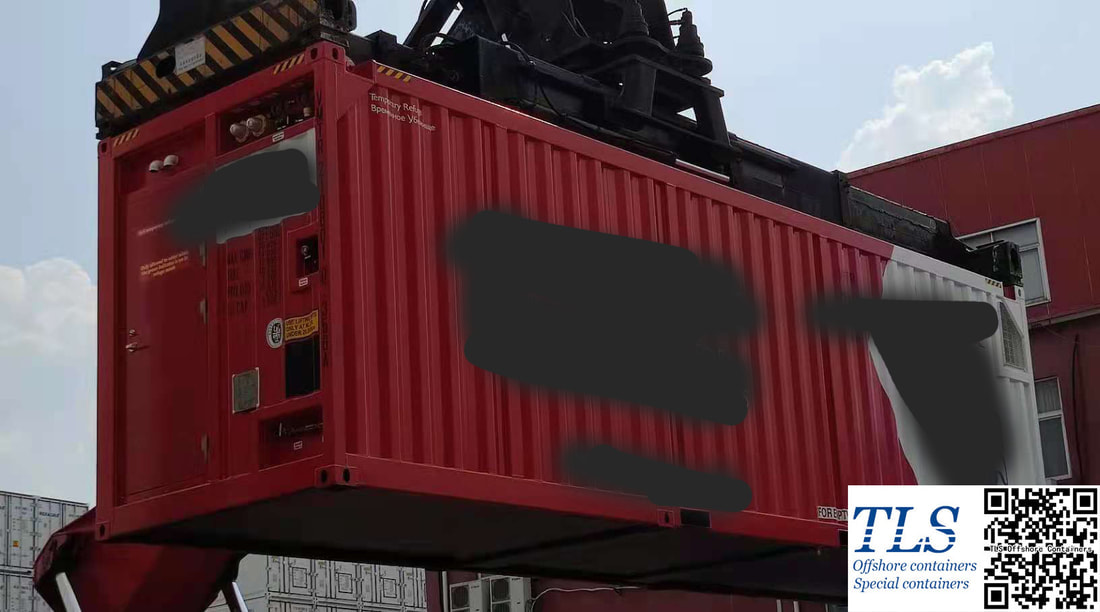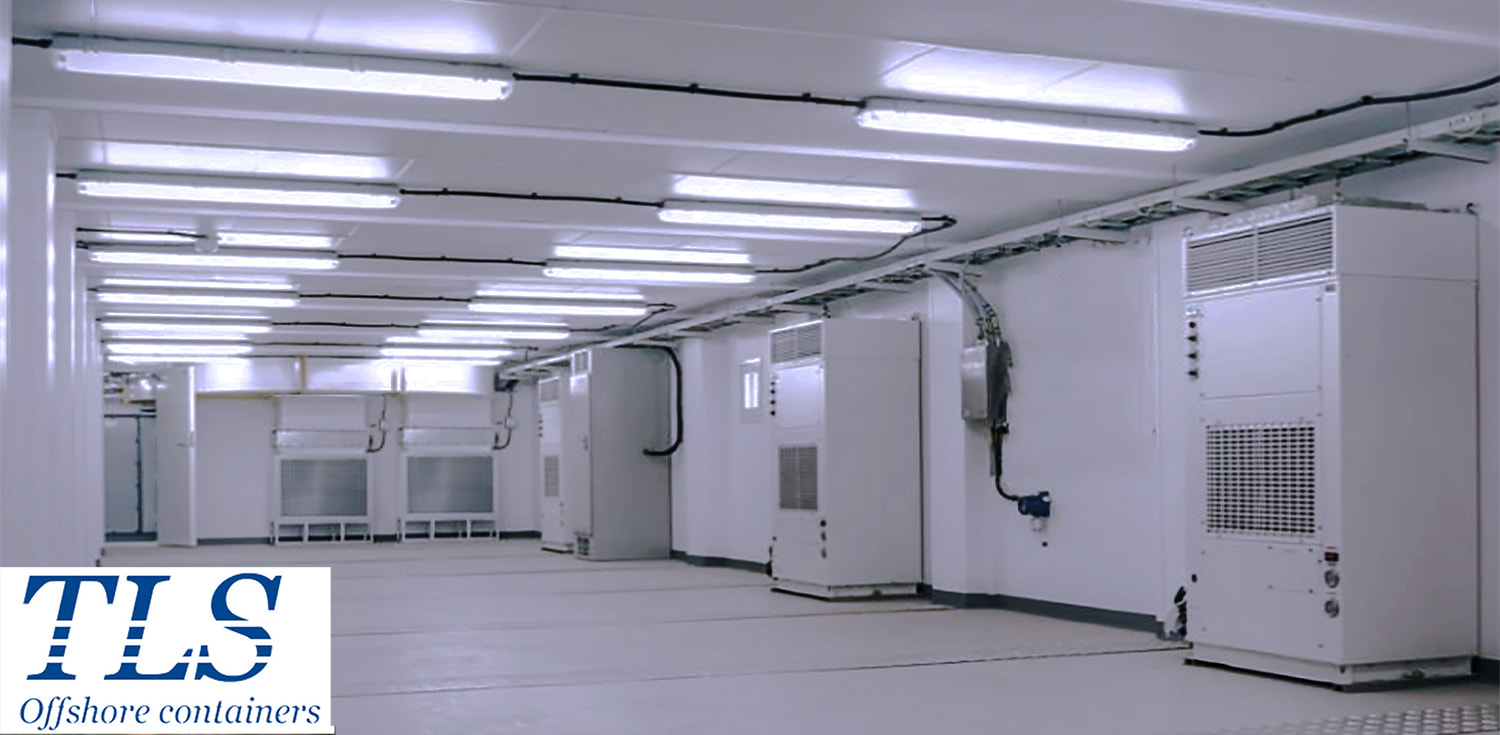Temporary refuge shelter (TR) | Safe haven cabin, toxic gas refuge shelter (TGR) | H2S temporary refuge shelter | emergency refuge chamber | disaster refuge | blast resistant container
A Temporary Refuge (TR) shelter (sometimes referred to as a Toxic Gas Refuge (TGR), Safe Haven Cabin, H2S Temporary Refuge Shelter, or TR Pressurization Unit) is a place or shelter that is designed to adequately protect personnel from relevant hazards during major incidents. It is equipped with communications, monitoring and control equipment to ensure personal safety and facilitate safe and complete evacuation if necessary. The TR shelter is externally installed and has a supply duct to the TR area interior. Its control panel is installed internally within the TR area and is designed as a fail-safe system, meaning that clean air will leak out of the shelter in the event of damage or an air seal leak.
The main purpose of a Temporary Refuge shelter is to keep personnel safe in hazardous environments, such as chemical processing plants, floating production storage and offloading (FPSO) vessels, offshore platforms, and industrial manufacturers. In the event of an explosion, chemical release, or other hazardous emergency, the TR shelter provides a safe and secure area for personnel ranging from multiple to hundreds. It is activated via alarm and provides protection for 1-4 hours or more. Its HVAC and positive pressure system protect personnel and equipment from critical outdoor conditions. The breathable atmosphere within the sealed TR shelter is provided to protect personnel.
Operation sequence of TR, TGR during emergency situation
Main features of Temporary Refuge (TR) shelter | safe haven cabin | toxic gas refuge (TGR) | H2S temporary refuge shelter
The main purpose of a Temporary Refuge shelter is to keep personnel safe in hazardous environments, such as chemical processing plants, floating production storage and offloading (FPSO) vessels, offshore platforms, and industrial manufacturers. In the event of an explosion, chemical release, or other hazardous emergency, the TR shelter provides a safe and secure area for personnel ranging from multiple to hundreds. It is activated via alarm and provides protection for 1-4 hours or more. Its HVAC and positive pressure system protect personnel and equipment from critical outdoor conditions. The breathable atmosphere within the sealed TR shelter is provided to protect personnel.
Operation sequence of TR, TGR during emergency situation
- Fire and gas detection system send an alarm
- All the personnel run near the TR
- The TR F&G system run the emergency sequence operation, close the F&G dampers and lock the external doors
- TR electric power is switched from external power supply to UPS
- The HVAC system is switched from “fresh air” mode to “full recirculation” mode.
- Is activated the compressed air pressurisation system and the BA system.
- The air lock BA washing system is ready to start
- The air lock doors are unlocked for the first mustering sequence
- A predetermined number of personnel go inside the air lock (the TR doors are still closed)
- Start the BA washing sequence inside the air lock (the air lock doors are now closed)
- A toxic gas analyser verify the absence of gas (if the gas is revealed, start an additional washing sequence)
- The TR rooms doors can be opened.
- Start another mustering sequence (during the mustering, people outside the TR complex waiting for their turn are connected with the outdoor BA Cascade system)
- People inside the TR rooms take their sit or their numbered position, waiting for the rescue vehicle or for the end of the alarm.
- In case of TR evacuation (at the end of the 2 or 3 hours of emergency capacity of the TR), will start the disembarking sequence (through the air lock with only 1 washing sequence).
Main features of Temporary Refuge (TR) shelter | safe haven cabin | toxic gas refuge (TGR) | H2S temporary refuge shelter
- Designed for an atmosphere during environmental contamination from poisonous gases
- To provide protection against fire and contaminated environment
- Resist to external Heat Stress due to fire caused by inflammable gas
- To provide recovery to people on board (POB) in case of detection of gas mix including at least: Hydrogen Sulphide, Sulphur Dioxide, inflammable gas such as Methane, Butane, Propane, non-flammable gases as Nitrogen, Carbon Dioxide, Oxygen Deficiency, hazardous exhaust and Temporary smoke with particles suspension
- To provide temporary medical assistance to injured personnel
- Suitable for use as shelter-in-place (SIP) protection from H2S and impermeable to toxic gasses.
- Completely automatically shut down auxiliary systems and dampers of the system after detecting poisonous gases in the outside environment
Key specifications
|
|
More information about temporary refuge (TR) shelter | toxic gas refuge (TGR) | safe haven cabin
Don’t hesitate to contact us for more information about the temporary refuge shelter and toxic gas refuge. We are eager to explain the possibilities for your applications.
Please download TLS containerised solutions of temporary refuge shelter product brochure for reference.
Don’t hesitate to contact us for more information about the temporary refuge shelter and toxic gas refuge. We are eager to explain the possibilities for your applications.
Please download TLS containerised solutions of temporary refuge shelter product brochure for reference.

